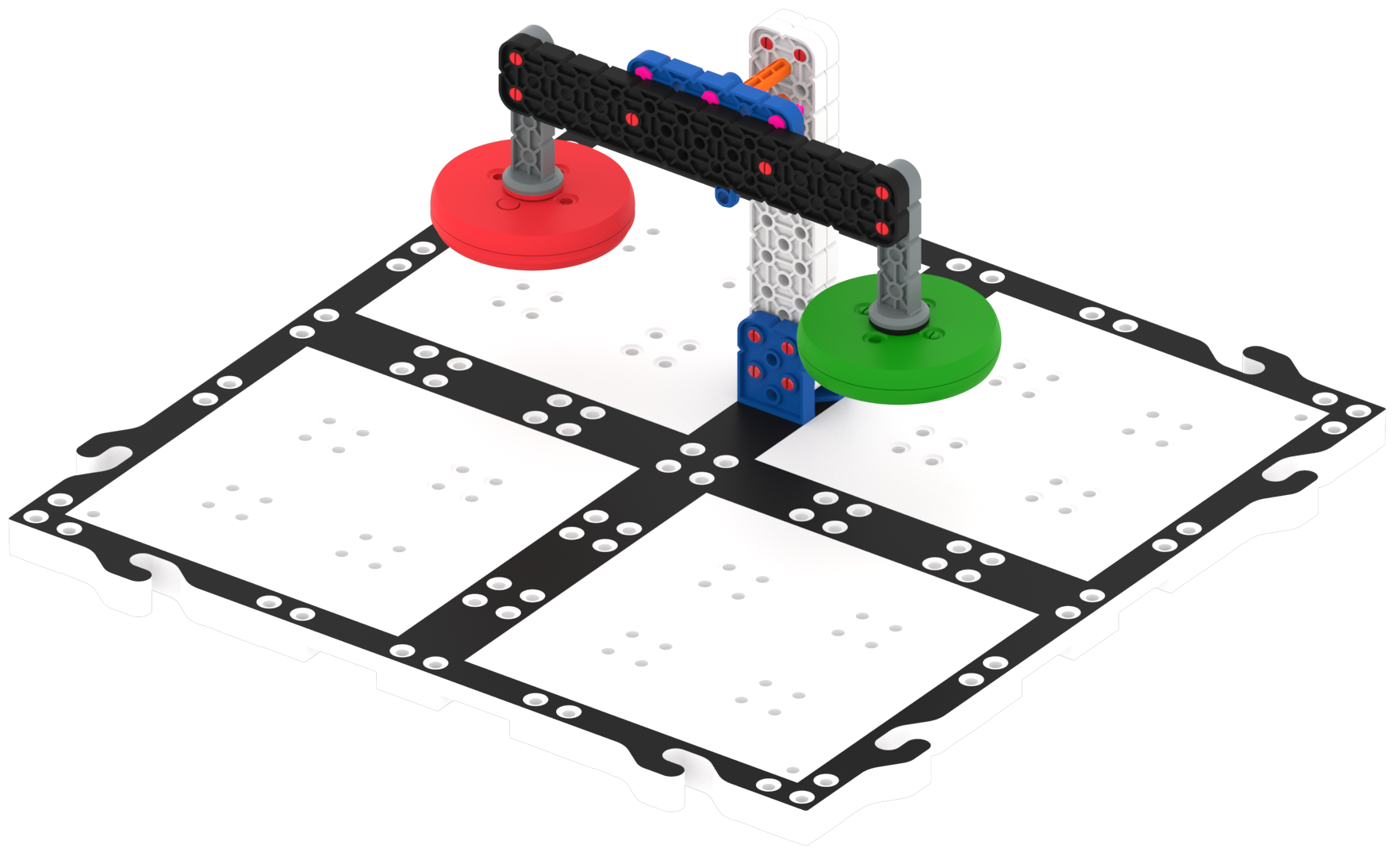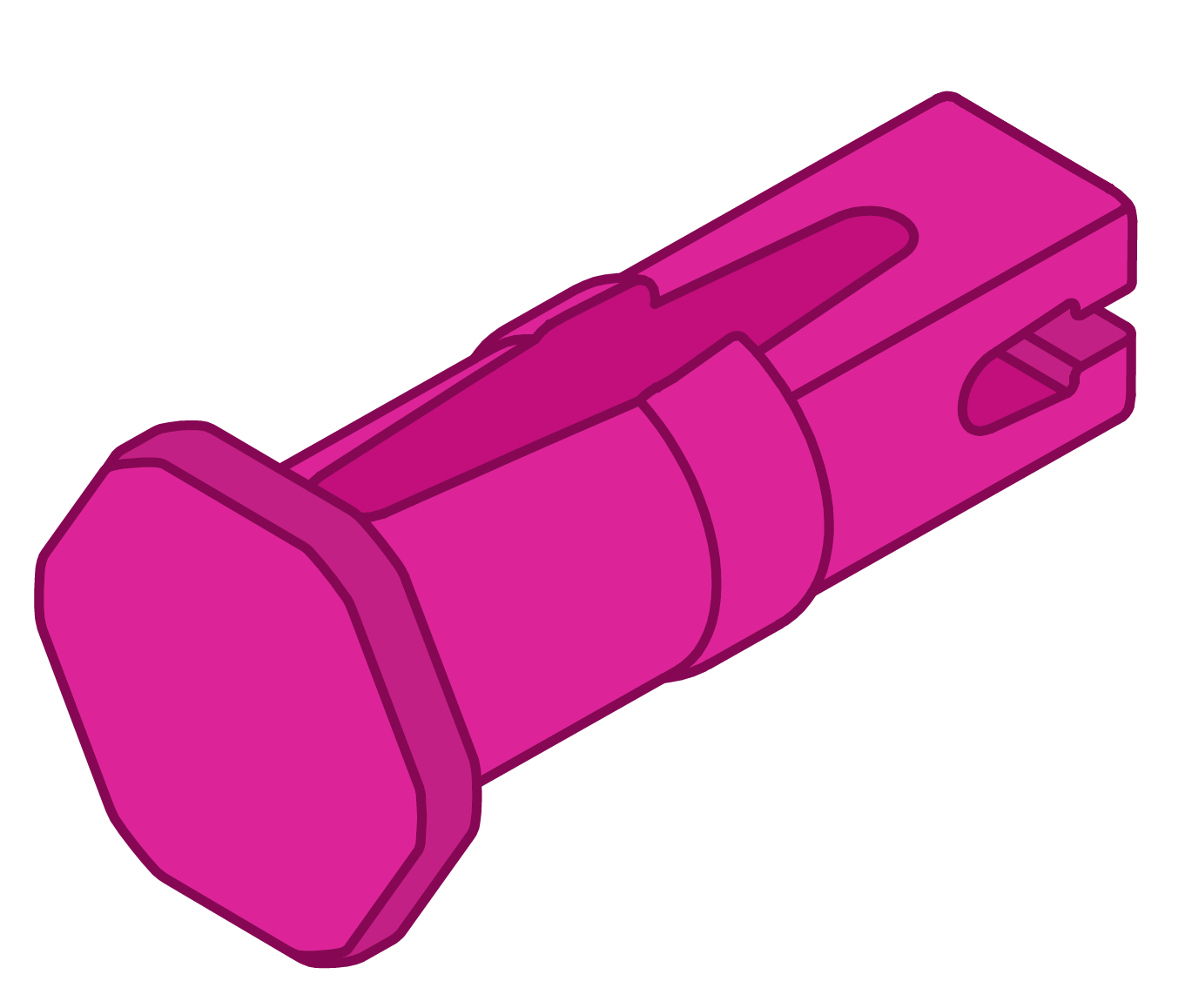Engage
Launch the Engage Section
ACTS is what the teacher will do and ASKS is how the teacher will facilitate.
| ACTS | ASKS |
|---|---|
|
|
Getting the Students Ready to Build
Levers are used to move and lift heavy objects by reducing the amount of force required to lift the object. Today, we will use VEX GO Kits to build a Lever and investigate how a lever makes work easier.
Facilitate the Build
- InstructInstruct students to join their team, and have them complete the Robotics Roles & Routines sheet. Use the Suggested Role Responsibilities slide in the Lab Image Slideshow as a guide for students to complete this sheet.
- DistributeDistribute build instructions to each team. Journalists should gather the materials.
-
FacilitateFacilitate
building process.
- Builders can begin building. If there are multiple builders, they should alternate steps to complete the build.
- Journalists should assist with build instructions as needed.

VEX GO Lever - OfferOffer suggestions and note positive team building and problem solving strategies as teams build together.

Teacher Troubleshooting
-
Ensure the Pink Pin is used for the pivot point. A regular pin will not spin as freely.

Pink Pin - Ensure students are attaching the Lever to the GO Tile. This will help prevent the build from falling over when forces on it are changed.
Facilitation Strategies
- Allow students to “play teacher” when they have a good understanding of a concept that they can teach another student.
- Remind students of the value of diversity—that different students within the group can bring ideas that should be considered. Diversity can help contribute to good problem solving techniques.
- If students are struggling to understand what a pivot point is, reference a seesaw or teeter-totter. Have students imagine if the Disks were on one side and the pins were on the other. How would that affect the seesaw?
- Use the Get Ready...Get VEX...GO! PDF Book and Teacher’s Guide - If students are new to VEX GO, read the PDF book and use the prompts in the Teacher’s Guide (Google / .pptx / .pdf) to facilitate an introduction to building and using VEX GO before beginning the Lab activities. Students can join their groups and gather their VEX GO Kits, and follow along with the building activity within the book as you read.
- Use the Teacher’s Guide to facilitate student engagement. To focus on VEX GO connections in a more concrete or tangible way, use the Share, Show, or Find prompts on each page to give students an opportunity to get to know their kits in more depth.
- To focus on the habits of mind that support building and learning with VEX GO, like persistence, patience, and teamwork, use the Think prompts on each page to engage students in conversations about mindset and strategies to support successful group work and creative thinking.
- To learn more about using the PDF book and accompanying Teacher’s Guide as a teaching tool any time you are using VEX GO in your classroom, see this VEX Library article.